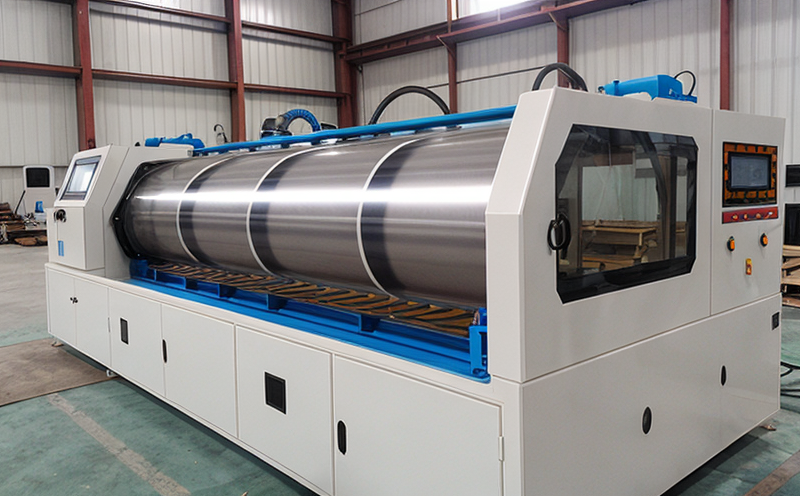Weathering resistance testing of outdoor coated textiles
The weathering resistance test evaluates the durability and longevity of coatings used in outdoor textiles. This is crucial for products that are exposed to environmental factors like sunlight, rain, temperature fluctuations, and ultraviolet (UV) radiation. The purpose of this test is to ensure that the coating remains intact and functional over its intended lifespan, providing protection against degradation.
Outdoor textiles often face harsh conditions, including prolonged exposure to ultraviolet light, which can cause photochemical reactions leading to color fading and material breakdown. This testing helps manufacturers understand how well their coatings withstand these elements, allowing for improvements in formulation or application techniques.
The test typically involves exposing specimens cut from the textile under controlled conditions that mimic real-world weathering scenarios. The most common methods include artificial weathering using xenon arc lamps and natural exposure tests where samples are placed outdoors or in climatic chambers designed to simulate various climates.
During testing, the specimen undergoes a series of cycles including UV radiation, moisture exposure, temperature swings, and humidity variations. These parameters are crucial as they reflect the actual environmental stresses encountered by outdoor textiles during their lifetime. After each cycle, the integrity of the coating is assessed through visual inspection, measurement of thickness changes, color stability checks, and adhesion tests.
The results provide valuable insights into the performance characteristics of the coatings under different weathering conditions. This information can be used to optimize formulas, enhance resistance against specific environmental factors, or select appropriate materials for particular applications.
Understanding the mechanisms behind material degradation is essential in developing more robust solutions. Factors such as chemical composition, molecular structure, and physical properties play significant roles in determining a coating’s resistance to weathering. By leveraging this knowledge, researchers can design better coatings tailored specifically to outdoor use.
In summary, weathering resistance testing of outdoor coated textiles is vital for ensuring product longevity and performance under challenging environmental conditions. It enables manufacturers to develop high-quality products that meet both regulatory requirements and customer expectations regarding durability and reliability.
Scope and Methodology
The scope of weathering resistance testing encompasses evaluating the stability of coatings applied to textiles intended for outdoor use. This involves assessing various aspects such as color retention, surface integrity, adhesion strength, and overall durability over time.
For this test, standard methods like ASTM G154 (for xenon arc lamps) or ISO 4892-3 (natural exposure tests) are often employed. These standards provide detailed protocols regarding specimen preparation, exposure parameters, sampling intervals, and evaluation criteria.
The methodology typically starts with selecting representative samples of the textile material to be tested. These samples should accurately reflect the intended application and usage conditions. Once selected, they undergo rigorous preparation processes including cleaning, conditioning, and marking if necessary.
Exposure begins by placing these prepared specimens into a controlled environment designed to simulate specific weathering conditions. For artificial testing, this usually involves exposing them to high-intensity UV light sources while maintaining precise temperature and humidity levels throughout the cycle.
Cycles are repeated multiple times according to predefined schedules specified by relevant standards. At each interval, detailed observations are made regarding any visible changes in appearance or structure. Additional tests may include thickness measurements before and after exposure to quantify any thinning effects due to weathering.
After completing the prescribed cycles, thorough evaluations follow using visual assessments supplemented by quantitative analyses where applicable. Results from these analyses help determine whether the coating has maintained its original properties adequately throughout the test period.
Why Choose This Test
Selecting weathering resistance testing is essential for several reasons. Firstly, it ensures compliance with international standards and regulations governing outdoor textiles. Many industries have specific requirements regarding the durability of materials used in their products.
Secondly, this test allows manufacturers to identify potential issues early on during development stages rather than discovering problems post-production when they are much more difficult—and expensive—to address. Early identification enables adjustments to be made promptly based on feedback from testing results.
Thirdly, it enhances consumer confidence by demonstrating that the product will perform reliably over extended periods under challenging environmental conditions. This builds trust both with end-users and distributors who rely on consistent quality assurance practices within supply chains.
Furthermore, successful completion of this test can lead to competitive advantages in marketing efforts. By showcasing a commitment to rigorous testing protocols, companies position themselves positively among competitors offering similar products but without comparable assurances about longevity and reliability.
Lastly, it supports continuous improvement initiatives aimed at enhancing the overall quality of textile products through iterative refinement processes informed by ongoing test outcomes. This approach fosters innovation while ensuring sustained excellence in manufacturing practices.
Use Cases and Application Examples
This type of testing is particularly relevant for industries such as automotive, construction, marine, and outdoor apparel where prolonged exposure to natural elements poses significant risks. In these sectors, selecting appropriate coatings becomes critical for maintaining structural integrity and aesthetic appeal.
For instance, in the automotive industry, weathering resistance tests ensure that paint finishes on vehicles remain vibrant even after years of use outdoors. Similarly, in construction applications like roofing membranes or facade coatings, successful weathering resistance ensures long-term protection against environmental elements without compromising performance.
In marine environments, where constant exposure to saltwater and sunlight can severely degrade materials, this testing is indispensable. It helps select suitable paints for hulls of ships or protective coatings on offshore structures ensuring they last longer before needing replacement.
Outdoor apparel companies also benefit greatly from such tests as they aim to create durable clothing items capable of withstanding harsh conditions faced by users during outdoor activities like hiking, camping, and sports. By incorporating robust coatings into these garments, manufacturers can enhance wearer comfort while extending product lifespans significantly.





